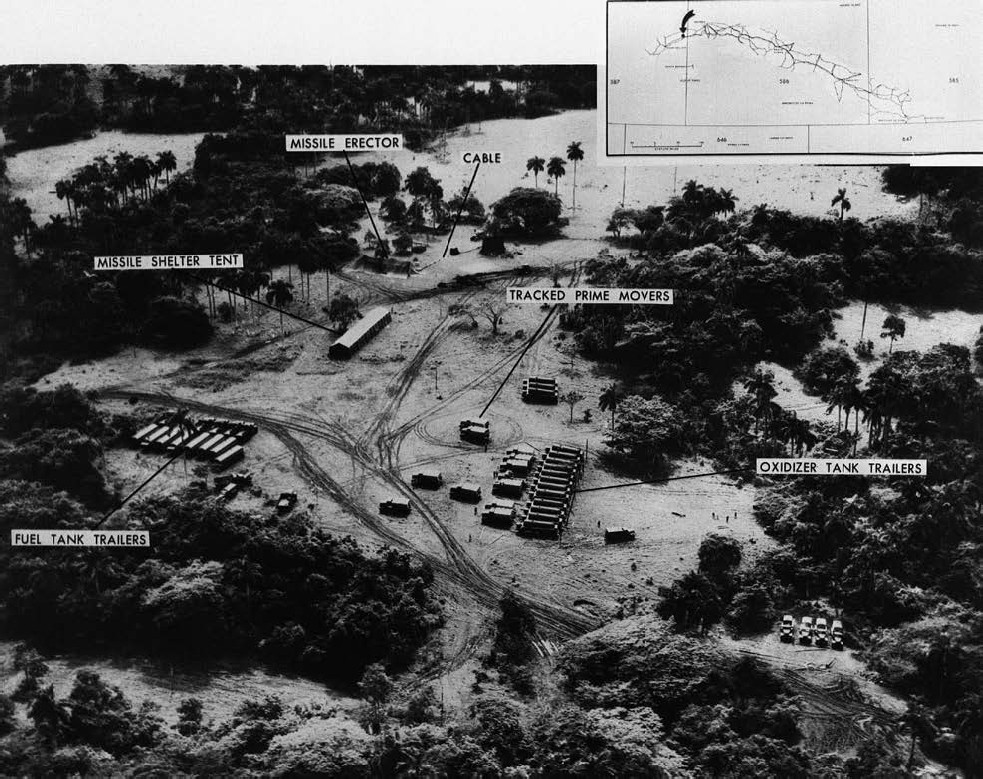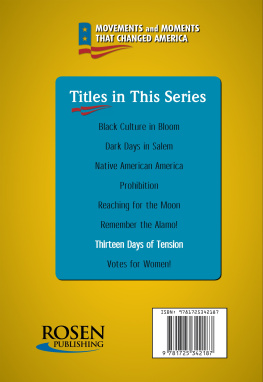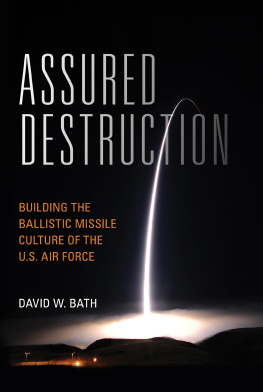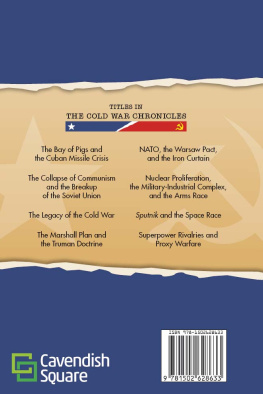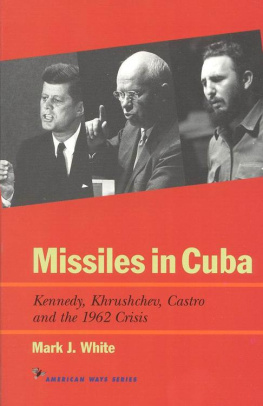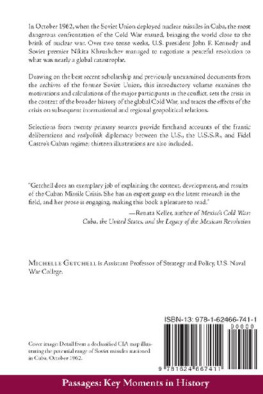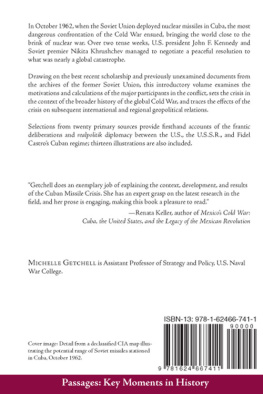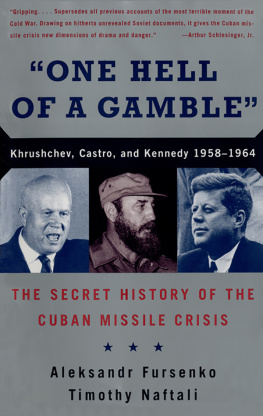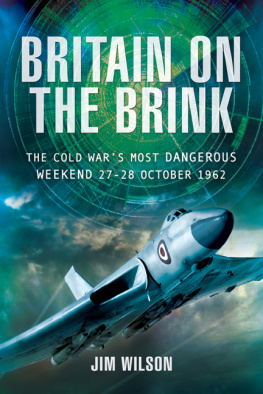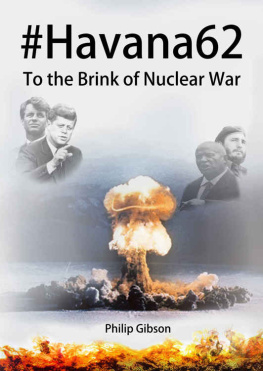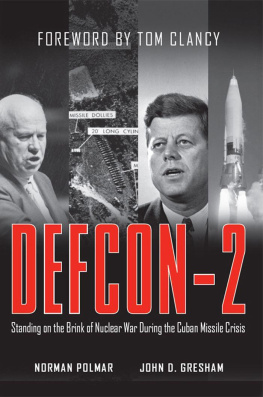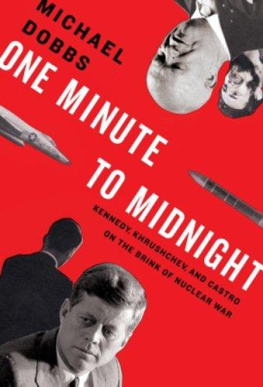
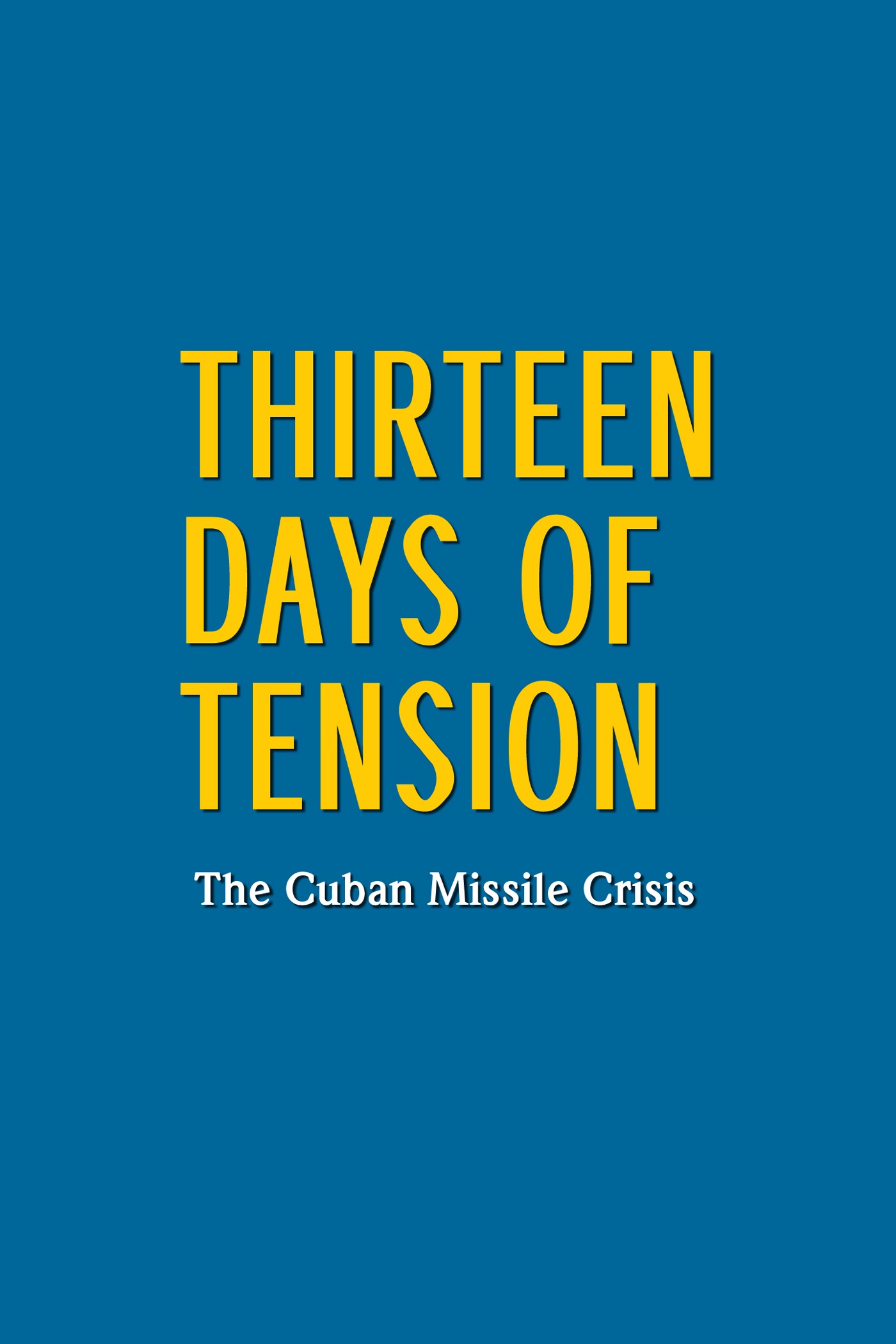
Published in 2021 by The Rosen Publishing Group, Inc.
29 East 21st Street, New York, NY 10010
Copyright 2021 by The Rosen Publishing Group, Inc.
All rights reserved.
No part of this book may be reproduced by any means without the written permission of the publisher.
Library of Congress Cataloging-in-Publication Data
Names: Duncan, Terri Kaye, author. | Stein, R. Conrad, author.
Title: Thirteen days of tension: the Cuban Missile Crisis / Terri Kaye Duncan and R. Conrad Stein.
Description: New York: Rosen Publishing, 2021 | Series: Movements and
moments that changed America | Includes bibliographical references and
index. | Grade level: 6-12.
Identifiers: LCCN 2019010207 | ISBN 9781725342187 (library bound) | ISBN
9781725342170 (pbk.)
Subjects: LCSH: Cuban Missile Crisis, 1962Juvenile literature.
Classification: LCC E841 .D86 2021 | DDC 972.9106/4dc23
LC record available at https://lccn.loc.gov/2019010207
Printed in the United States of America
Portions of this book originally appeared in Cuban Missile Crisis: In the Shadow of NuclearWar.
Photo Credits: Cover, pp..
CPSIA Compliance Information: Batch #BSR20. For further information contact Rosen Publishing, New York, New York at 1-800-237-9932.

CONTENTS


INTRODUCTION
In 2015, there were rumors. Then, in 2018, an official report from the Pentagon confirmed the rumors. Russia was developing the most powerful nuclear weapon on Earth. The Pentagon refers to the weapon as Kanyon. Russia calls it Ocean Multipurpose System Status-6.
According to reports, Kanyon is an intercontinental, nuclear-armed undersea autonomous torpedo. It is approximately 5.5 feet (1.7 meters) wide and 79 feet (24 m) long. The weapon has a range of more than 6,200 miles (9,978 kilometers) and reportedly can be submerged to a maximum depth of about 3,280 feet (1,000 m). It travels 100 knots, which is just over 115 miles (185 km) per hour. Kanyon has a 100-megaton thermonuclear payload. This is equivalent to 100,000,000 tons of the explosive TNT. In comparison, the bomb dropped by the United States on Hiroshima to end World War II had a payload of 16 kilotons or 16,000 tons of TNT. This means that Kanyon is approximately six thousand times more powerful than the atomic bomb used in 1945. The weapon is also designed to get past American missile defenses. Kanyon is twice as powerful as any nuclear weapon ever tested. It is a doomsday weapon.

The mushroom cloud over Hiroshima, Japan, following the first atomic bomb attack at 8: 16 a.m. on August 6, 1945, rose to more than 60,000 feet (18,288 meters) in about ten minutes.
The existence of a nuclear weapon as powerful as Kanyon is scary. But unfathomably worse is learning that a nuclear war is imminent and that the use of doomsday weapons is looming. In October 1962, the United States faced such a reality. For thirteen days, the country teetered on the brink of a nuclear war with another world superpower, the Soviet Union. The event, referred at as the Cuban Missile Crisis by the United States, was a major Cold War confrontation that occurred when the Soviet Union secretly placed nuclear weapons on the small island of Cuba, which is located just 90 miles (145 km) off Floridas coast. The discovery of nuclear weapons so close to the American mainland led to a standoff between three countries and three political adversaries. It also brought the nations perilously close to nuclear war. While key leaders in the United States and the Soviet Union negotiated behind closed doors, people all over the world prepared for the worst. Was this to be the end of the world as they knew it?
 1
1
UNMISTAKABLE EVIDENCE
At 7: 10 on the morning of October 14, 1962, an American spy plane, a Lockheed U-2 approached the island of Cuba. With its elongated wings, the U-2 soared at dizzying heights above the sea and land. The single seat, single engine airplane had been built specifically for the United States Central Intelligence Agency (CIA). The aircraft carried US Air Force number 66675 on its tail. It was equipped with sensitive, state-of-the-art cameras and capable of inflight refueling in order to photograph the activities of potential enemies.
Major Richard Stephen Heyser, an experienced air force pilot, flew the plane over the island of Cuba at an altitude of 72,500 feet (22,098 m). Heyser was a pilot with the 4028th Strategic Reconnaissance Squadron, 4080th Strategic Reconnaissance Wing, United States Air Force. He knew that his flight was dangerous. When the U-2 was first developed in the 1950s, it flew so high that enemy antiaircraft guns and rockets could not shoot it down. Nor could hostile fighter planes attain the U-2s altitude to fire upon it. But recently developed anti-aircraft rockets were able to hit the U-2. Heyser wore a parachute strapped around his shoulders. However, bailing out in the thin air and freezing temperatures more than 72,000 feet (21,945.6 m) above sea level was risky. It was not known if a pilot could survive such a long parachute drop.
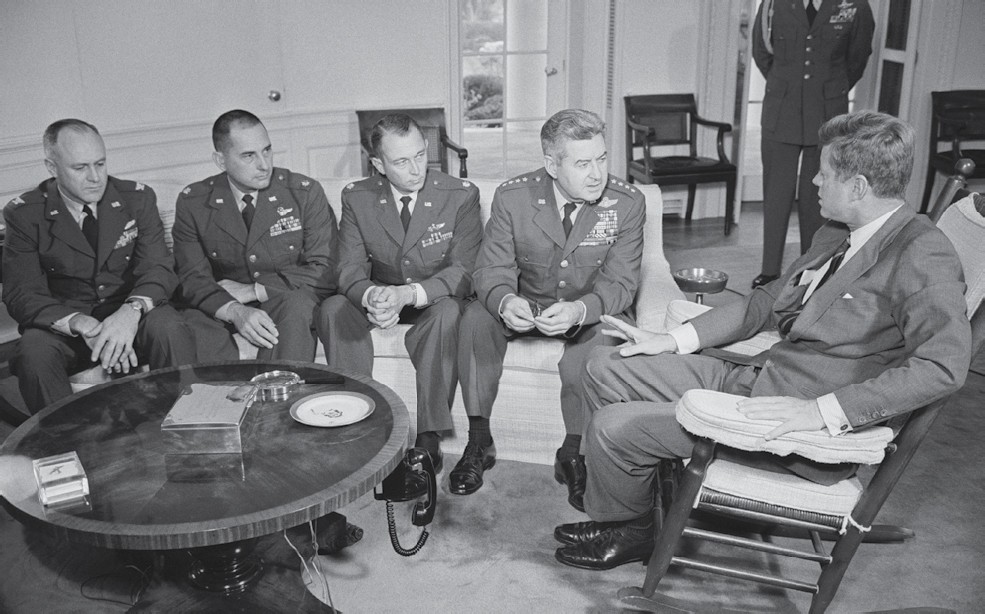
President Kennedy thanked Major Richard S. Heyser (third from left) for his bravery in flying reconnaissance missions over Cuba to gather photographic evidence of the missile sites. Heyser was the first pilot to conduct such a dangerous mission over Cuba.
Heyser must have pondered over what would happen to him if he were captured on Cuban soil. The U-2 operation he flew was a violation of international law. Heyser was illegally penetrating the airspace above a sovereign nation. He could be brought to trial as a spy and maybe executed.
Prepare for Any Eventualities

This perilous U-2 flight was ordered by President John F. Kennedy. The American president worried about the activities of Soviet troops and engineers on the island nation.
Agents on the ground told Kennedy that many Soviets had recently been stationed on Cuba. Dozens of Soviet ships were seen entering and leaving Cuban ports. This was the height of the Cold War, a grim period of tension between the Soviet Union and the United States. Cuba lay less than a hundred miles from the shores of Florida. What were the Soviets doing there? Kennedy hoped that U-2 photographs would give him and his advisers a clue.
